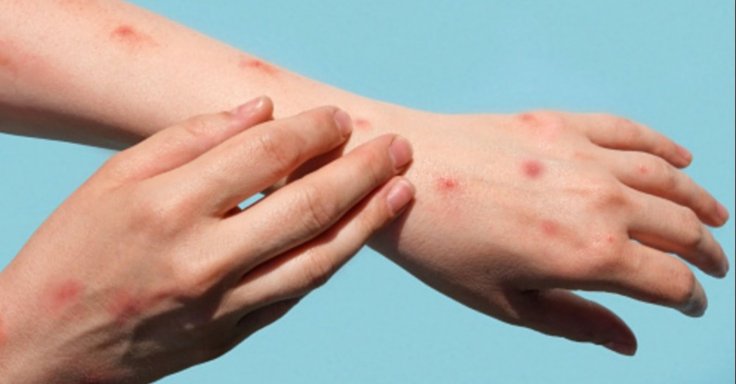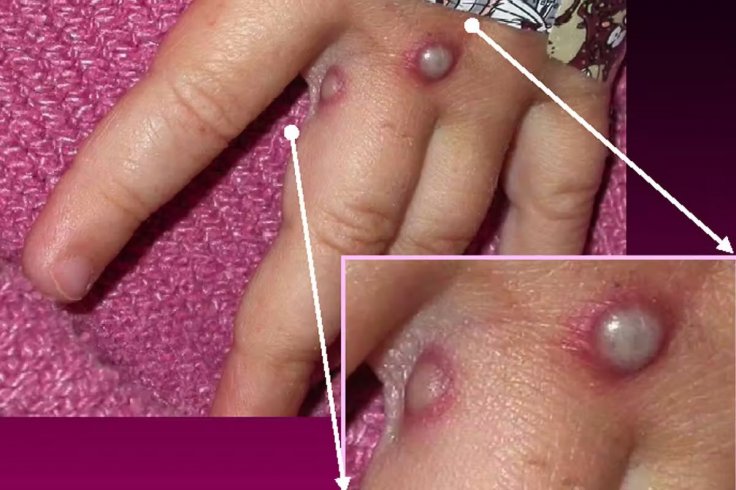A German monkeypox patient's nose has started to rot in one of the most horrific cases documented following the outbreak. The 40-year-old patient had gone to the doctor after a red spot developed on his nose, which the doctor had dismissed as sunburn. However, it has now been revealed that the nose has actually started rotting after he contracted monkeypox.
Horrifying photograph of the man's nose shows black spots and skin crumbling and falling from the affected part. Doctors said his case had become so severe because the man tested positive for HIV, which was untreated that left him immunocompromised, making him more at risk of necrosis.
Rotting and in Pain

The man too had initially thought that the spot was due to sunburn as his doctor had initially told him. However, it turned out to be something worse after the lesion on his nose began to turn black three days later.
According to a report in the medical journal Infection, the man soon discovered pus-filled lesions all over his body, with his mouth and penis being particularly badly affected. He was transported to the hospital and treated with a course of antiviral medication after a PCR test revealed he had monkeypox.

Additional tests revealed the patient, who has not been identified, also had untreated HIV and syphilis. He admitted to medical personnel that he had never previously undergone a sexually transmitted infection (STI).
The lesions dried up and the man received medication to cure the infections, but his nose only "partially improved."
Moreover, his syphilis had gone untreated for such a long time that it had spread to several organs, while HIV infection had turned into AIDS.

The study's authors claim that the man's illness was so severe because HIV impaired his immune system and made him vulnerable to necrosis, or the loss of body tissue.
Unique Case
Necrosis, or the beginning of tissue death, is typically brought on by an infection, which people with robust immune systems are better able to fight off. It happens when the supply of blood and oxygen to certain body areas is cut off, depriving the tissue of nutrition.

According to MailOnline, Professor Paul Hunter, a public health specialist at the University of East Anglia, said that severe cases may become more frequent as monkeypox spreads.
He said that smallpox can result in necrosis of the skin's sebaceous glands, which are largely concentrated on the nose and face and are based in the skin. Given "the very similar disease pattern in monkeypox," it is likely this would occur in severe cases of the virus as well, he added.
Although the case is quite unique, the incident once again proves the deadly nature of monkeypox and how it can affect humans. Doctors who penned the article for Infection did not provide an update on the man's recovery.

Since May 20, Germany has documented 3,186 cases of monkeypox, with the US (12,689) and Spain (5,719) reporting more cases. According to the Center for Disease Control and Prevention, there are little over 38,000 cases at this time in the entire world.
Although gay and bisexual males have constituted the majority of those infected thus far, anyone can contract or spread the virus.
Silver Steele, a gay Texas porn star who was identified as having monkeypox a few weeks ago, has been documenting his excruciating symptoms this week. Steele documented the lesions on his chin in photographs as they progressed, demonstrating that they were at their worst 11 days after the initial spot appeared. For more than three weeks, the symptoms persisted before they entirely disappeared.









